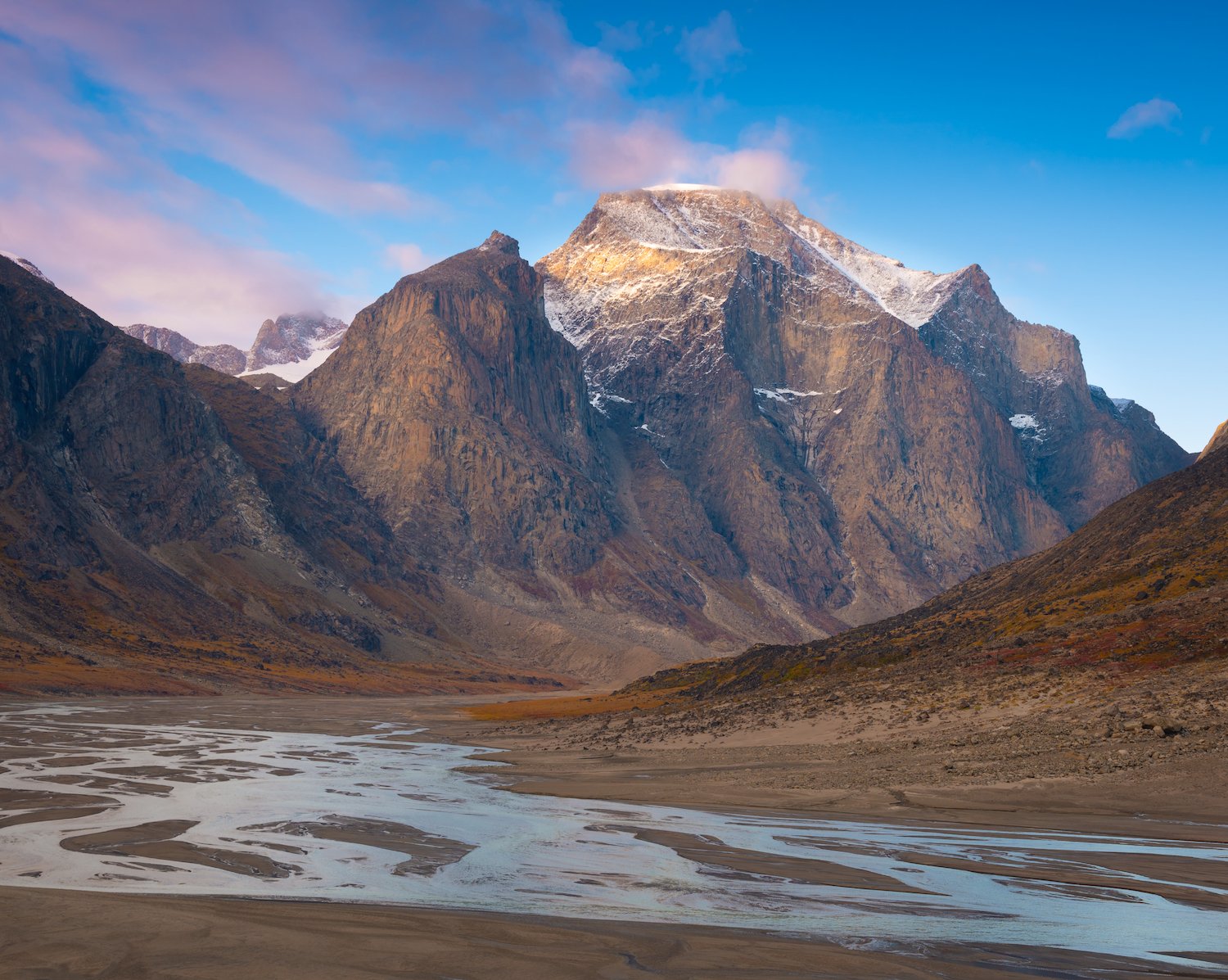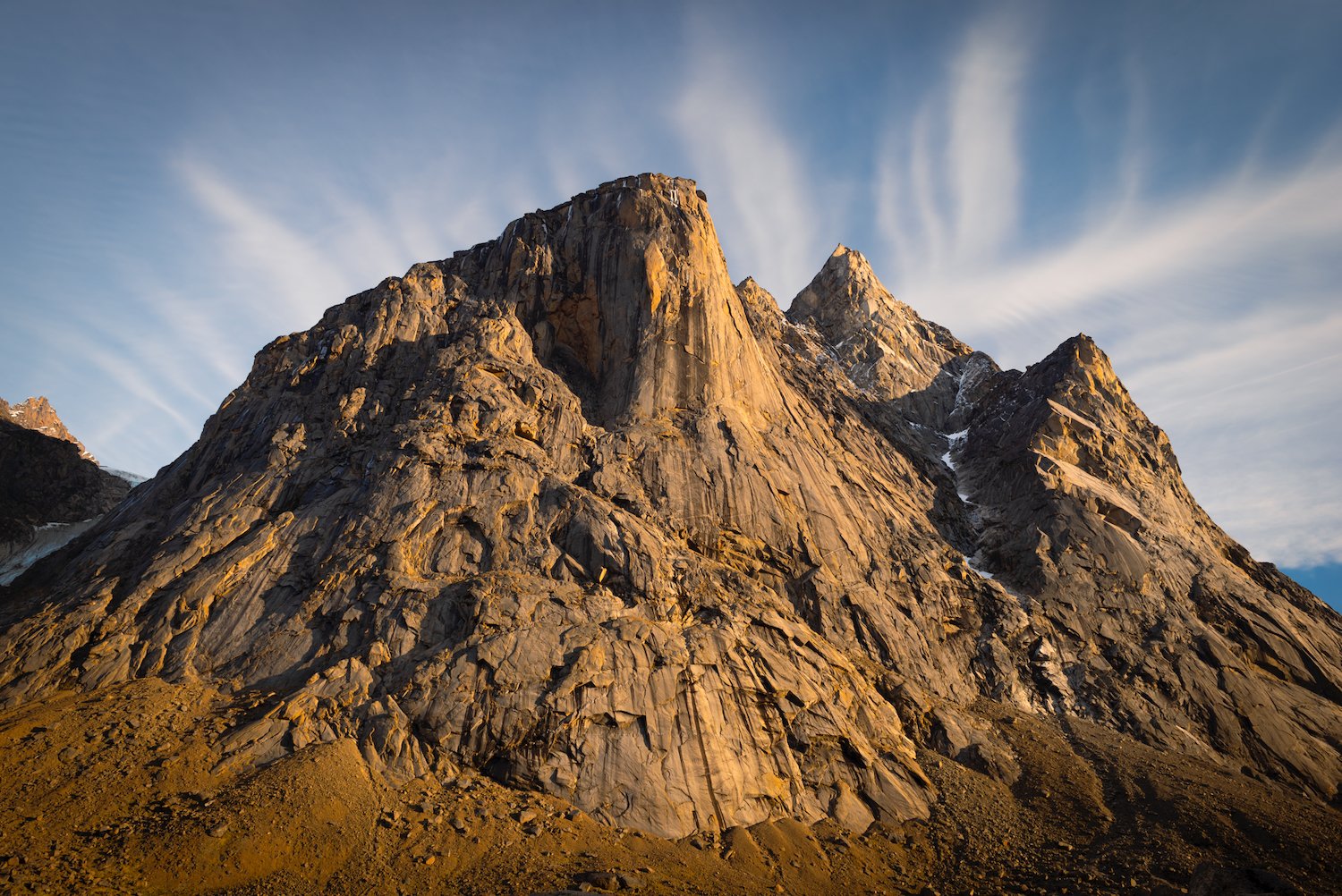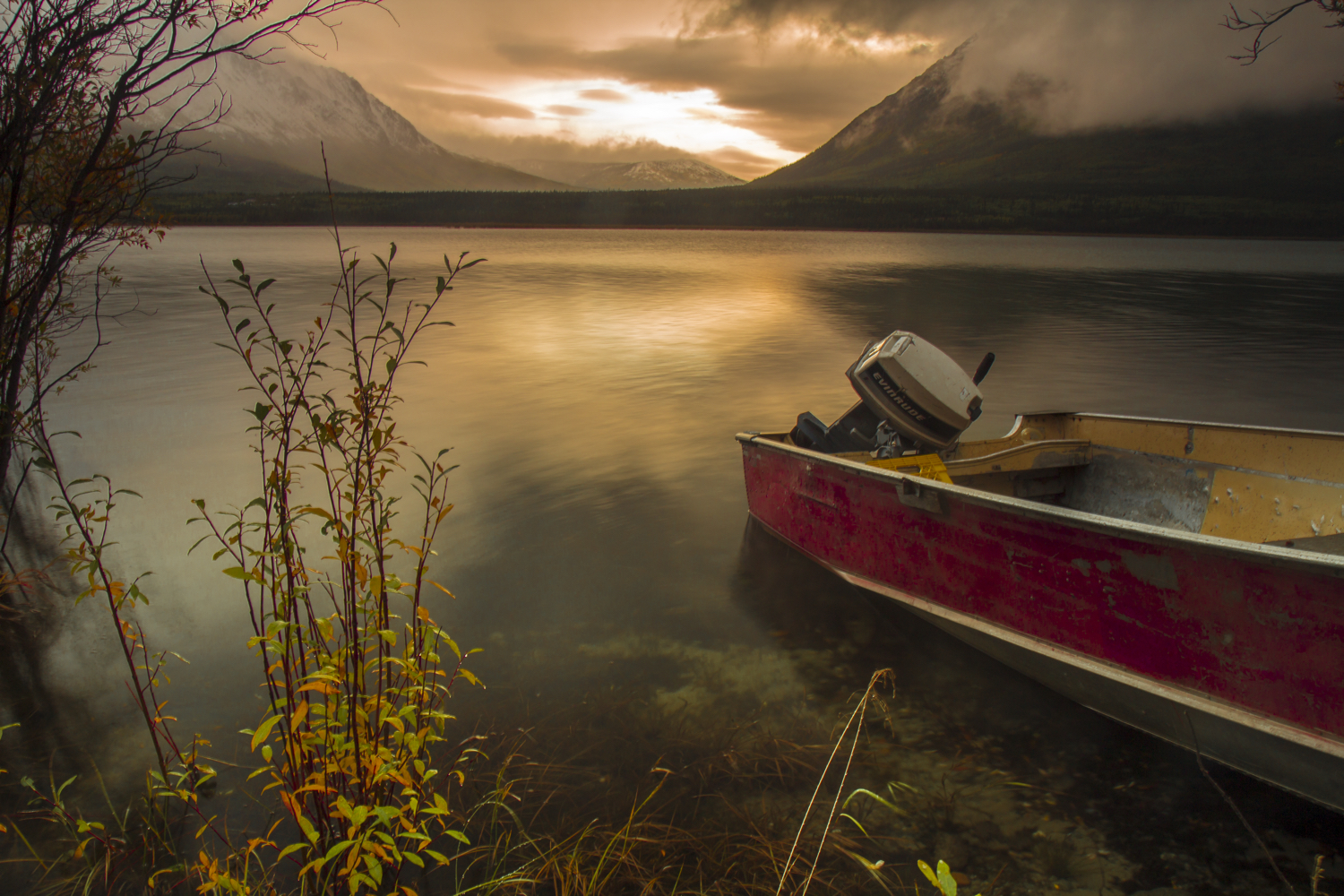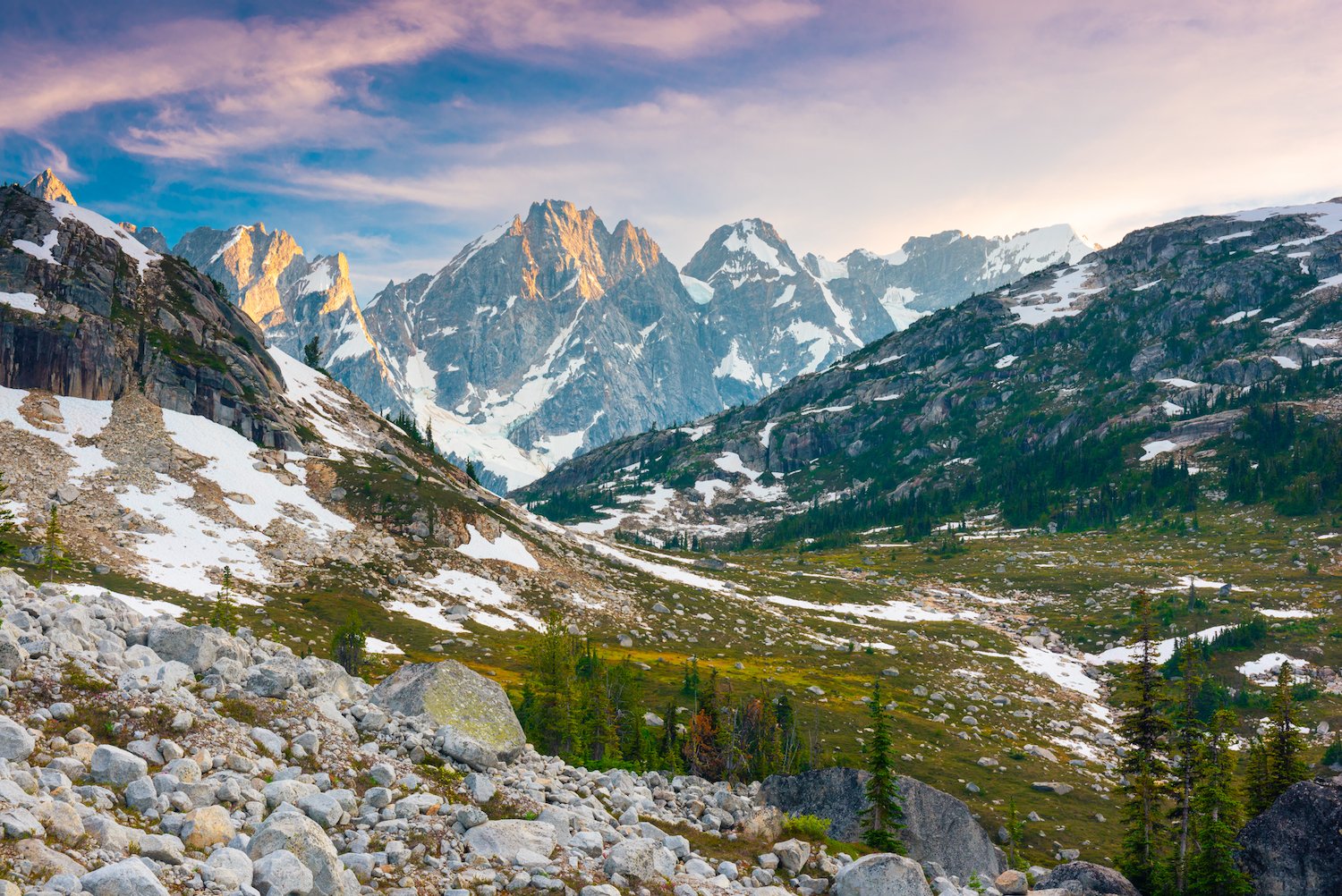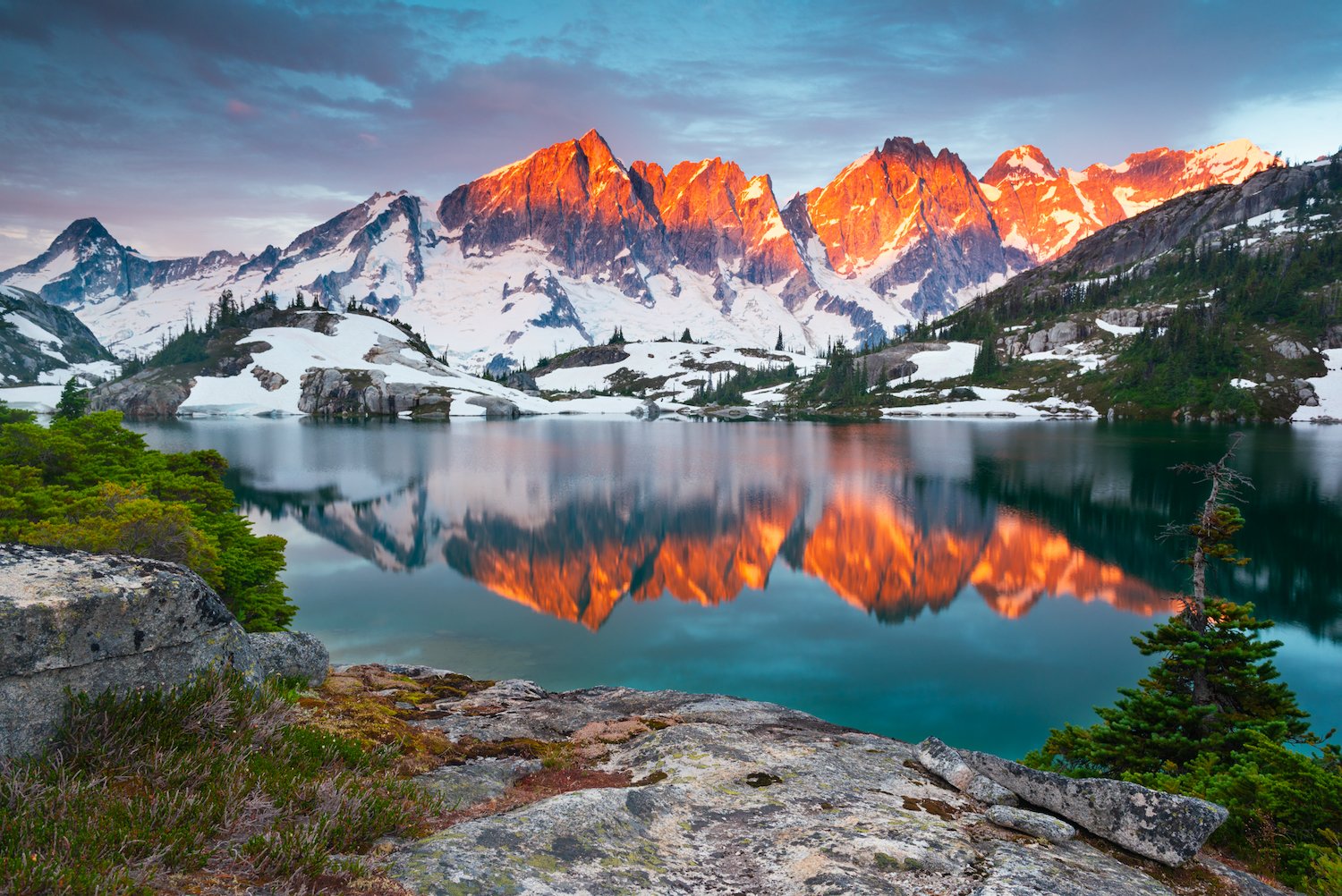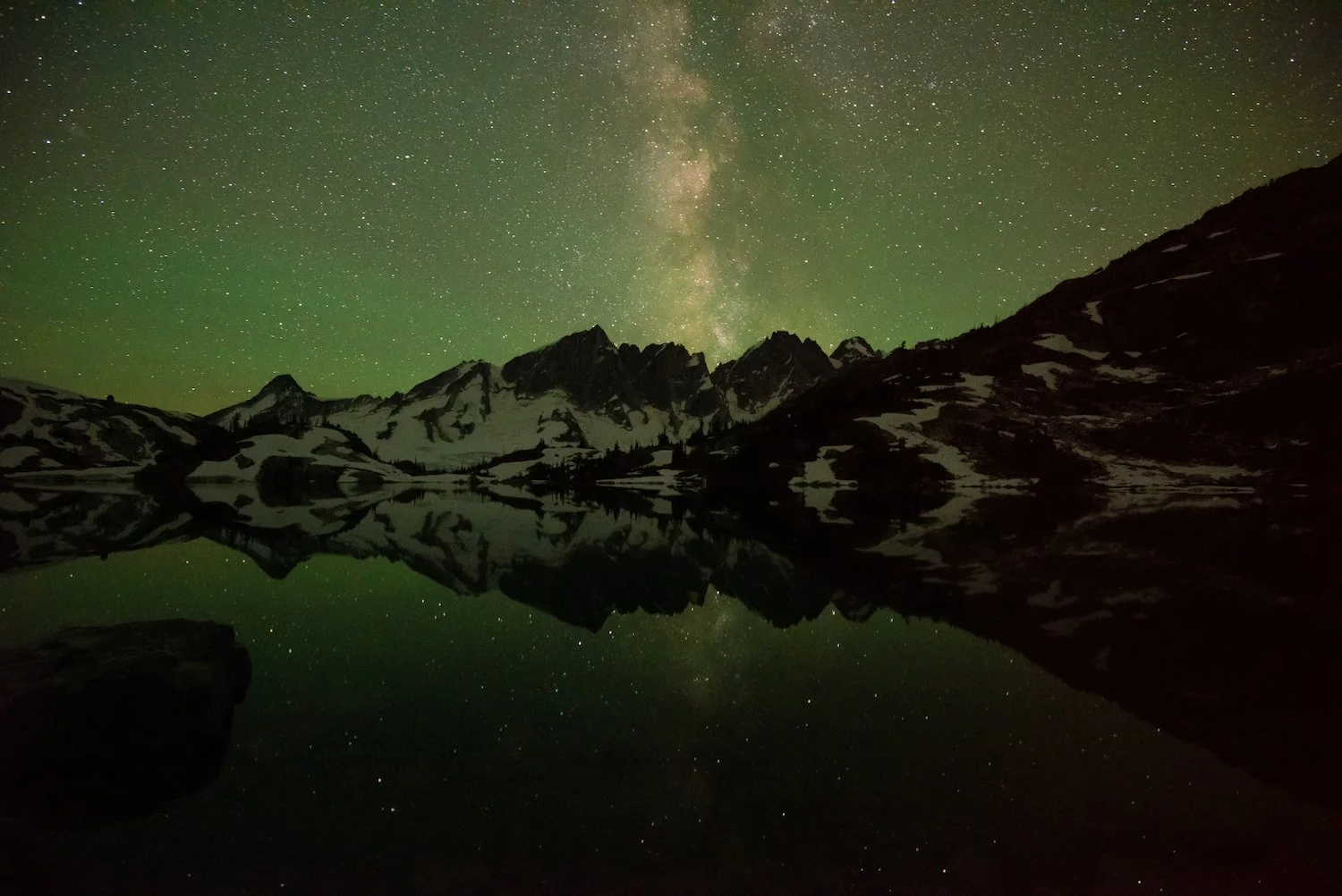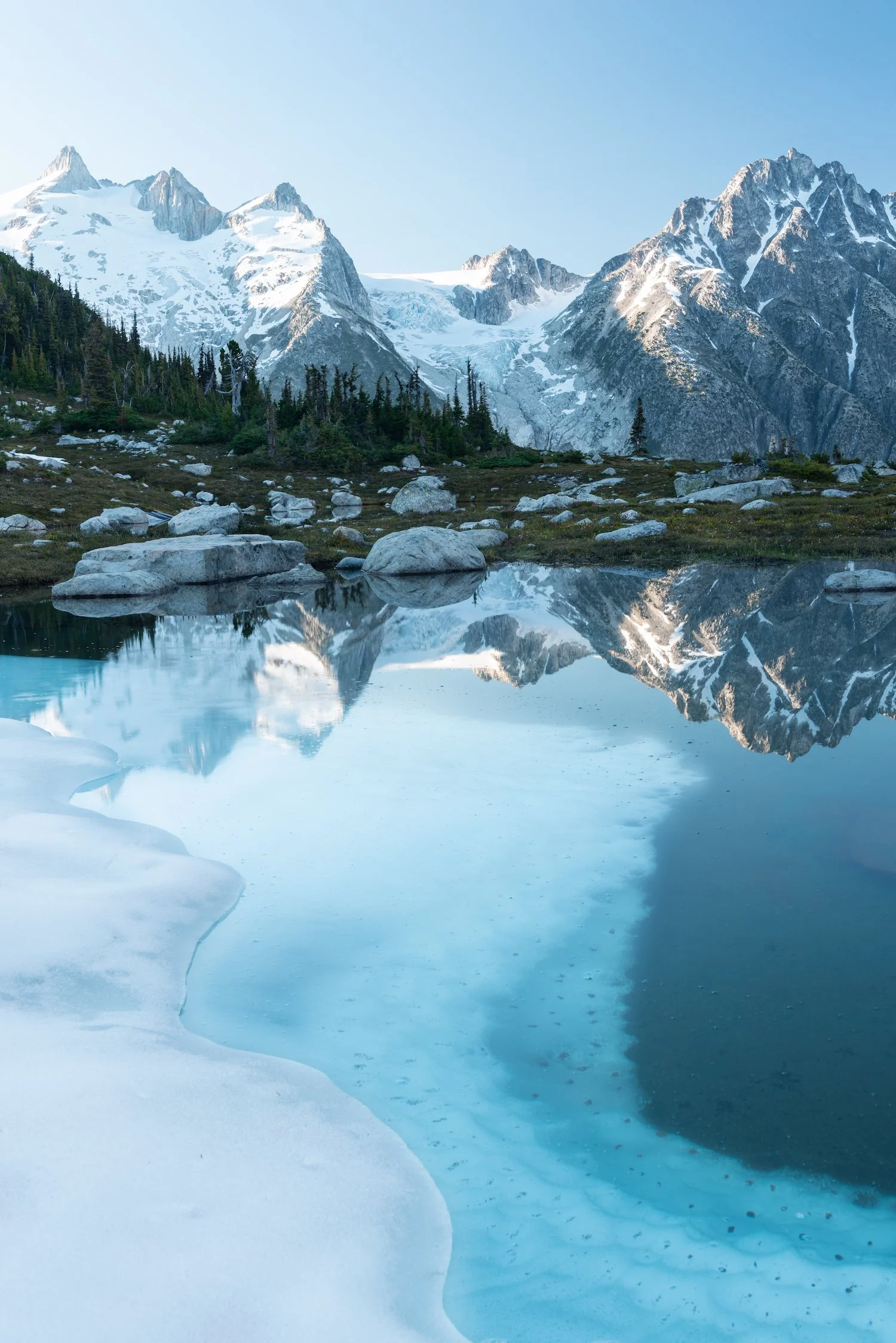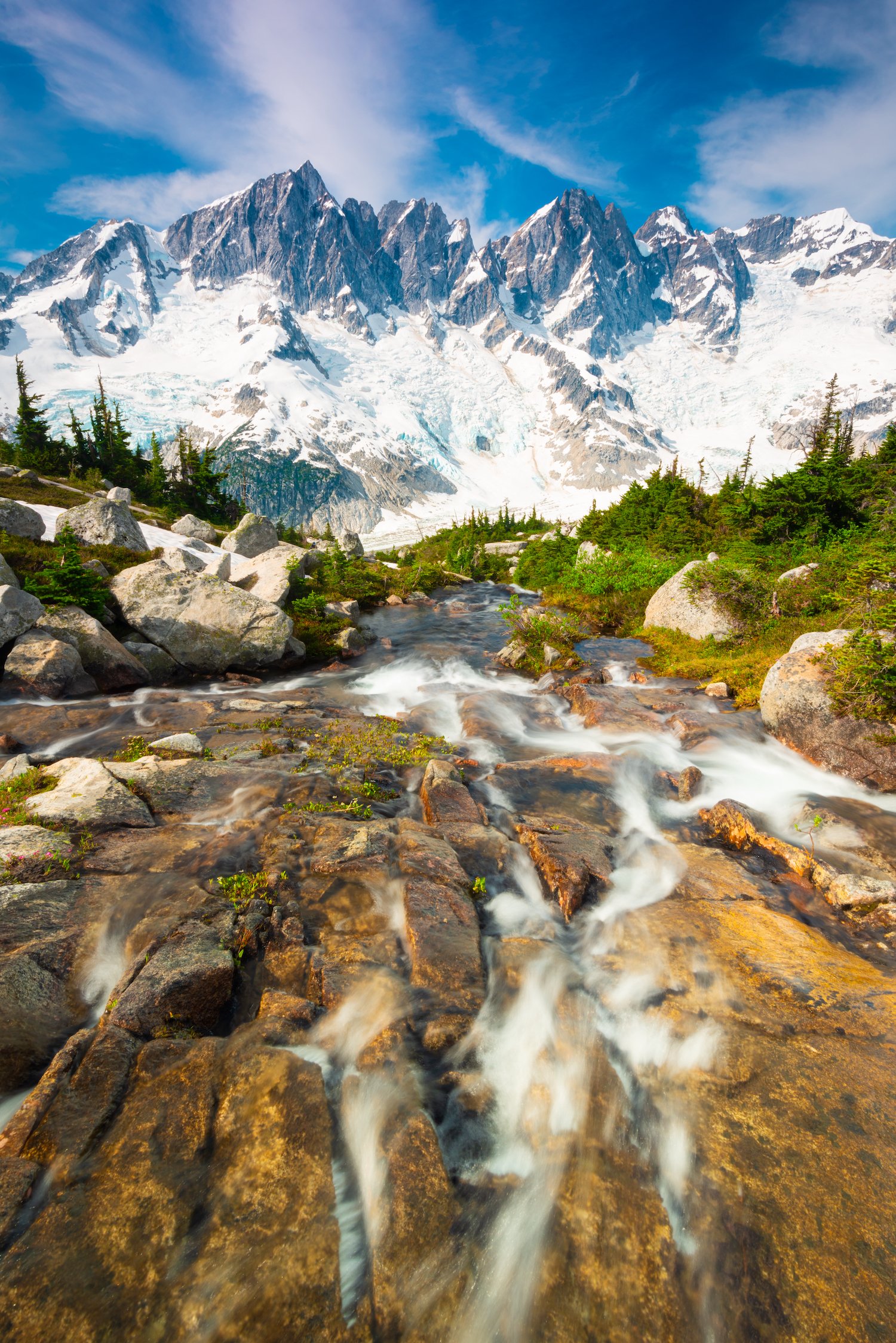Nunavut (Baffin Island)
The Canadian Arctic is truly one of the last remaining regions of wilderness on the planet. Its harsh climate and inaccessibility have left a majority of this vast land unoccupied and unexplored. Baffin Island, in the northern territory of Nunavut, with its jagged mountains, enormous glaciers, untamed rivers, and expansive ice sheets, is a particularly notable highlight of the region. Baffin is the fifth-largest island in the world and contains Auyuittuq National Park, renowned worldwide by climbers for its vertical granite towers and mammoth glaciers.
Akshayuk Pass
Mount Odin
Auyuittuq is centered around two distinct landscapes: the Penny Ice Cap and Akshayuk Pass. The former is a mass of ice covering most of the park, a remnant from the last ice age. The latter is a deep fjord flanked by colossal peaks on either side. Many of these mountains are named after Norse gods and mythology, including Mount Thor and Mount Asgard, the park’s most famous mountains known for their sheer verticality. Mount Thor, in particular, has an overhanging cliff that forms the tallest uninterrupted vertical drop on the planet, approximately 1,200 m (4,100 ft).
Mount Thor
Weasel River
Hiking the entirety of Akshayuk Pass's nearly 100 kilometers can take 8 to 12 days. However, some of the most notable landmarks—Mount Thor, Mount Asgard, Turner Glacier, Highway Glacier, and Summit Lake—are located in the southern part of the hike, closer to the tiny village of Pangnirtung. For those photographically inclined, a multi-day out-and-back trip from the south to Summit Lake and back may be the best option.
yukon
Like Alaska, Yukon is a northern wilderness of endless mountain ranges, forests, and icefields. Because of its sparse population, the territory very much defines the words "wild," "remote," and "unspoiled." Most of Yukon has a subarctic climate, characterized by long cold winters and brief warm summers. Around the Whitehorse area in southern Yukon, evergreen trees grow abundantly, but as you travel north, the shorter and colder growing season allows only treeless tundra to thrive.
Though Yukon blossoms with wonderful wildflowers in the summer, the diverse colors of early autumn make fall my favorite season. The tundra in the north explodes with red and orange hues during this time, making it popular with photographers. Regardless of when one visits, the Canadian territory is a photographic paradise of vast uninhabited expanses, huge towering mountains, colorful foliage, and unrelenting weather. Rain is often likely, but the weather regularly produces some of the most incredibly dramatic and menacing clouds—especially during the golden hours.
Fish Lake/Southern Yukon Highway
Southern Yukon is dotted with beautiful lakes and mountains, all of which are more accessible than other, wilder parts of Yukon. The Yukon Highway weaves its way around this area and provides majestic views and short hikes right from the road. The section of the highway just outside Whitehorse, particularly around Fish Lake, offers a stunning sample of the taiga wilderness that is Yukon (pictures two and four).
Farther east and running near the Mackenzie Mountains in central Yukon is the short but deep Lapie River Canyon, known for its pristine teal water. As the river cuts further into the canyon, the walls begin to grow in height. There are a number of interesting overlooks to view the river below, including this one with small pine trees growing on the banks.
Dawson and Western Yukon
The road crossing between central Yukon and Alaska is appropriately named the "Top of the World Highway" and traverses high, elevated mountain passes, as its name suggests. From this vantage point, it is absolutely incredible to see the rolling hills, blanketed in colorful fall flora, in front of distant snow-covered peaks. Western Yukon is also home to the mighty Yukon River, which enters from Alaska and ends near the border with British Columbia.
Top of the World Highway
Midnight Dome
Kluane National Park and Reserve
Kluane—home to Canada’s largest mountains—is a land of extremes. This southwest Yukon park contains Canada’s highest peak (the 5,959-meter Mount Logan), its largest ice field, and North America’s most genetically diverse grizzly population. Outside its frozen interior, the park consists of forest and tundra, where the climate is colder and drier than in the western and southern parts of the park.
The park’s interior is generally accessible only via flightseeing tours or on serious mountaineering/ski touring expeditions. The first picture showcases the beauty of the park during peak fall season. The row of mountains in the distance is essentially holding back the sheet of ice that continues far into Alaska.
Slims River
british Columbia (coast mountains)
Remote, unspoiled, and enormous, the Coast Range, extending from Alaska through British Columbia, is one of North America’s true wildernesses. Compared to other mountain ranges, there aren’t many trails, especially as you travel north. The pictures below are from the Mount Waddington area, which features spiky peaks and expansive glaciers. Helicoptering into this region is the safest and fastest way to access it.
Mount Waddington is the highest peak that lies entirely within British Columbia, and there are a number of sub-peaks and glaciers that surround it. The terrain is harsh and uncompromising. However, the area around Nabob Pass provides access to some of the most dramatic landscapes in the Coast Mountains and British Columbia generally. These mountains receive a lot of snow in the winter because of their position by the coast, which ensures a near-constant stream of precipitation. Here, glaciers and icefields envelop the massive mountains formed over millions of years, and visitors are sure to be awed by the untamed beauty of this part of the world.




